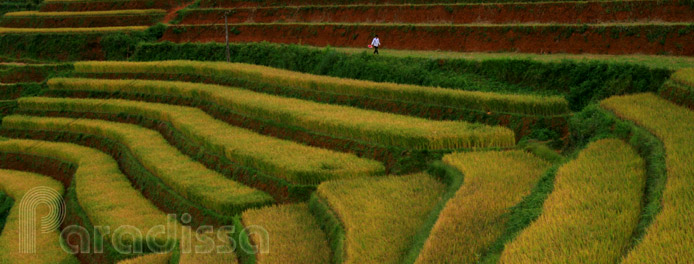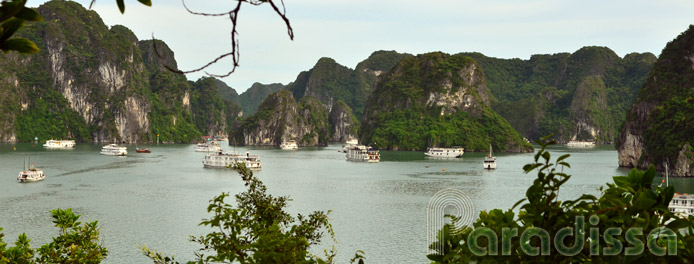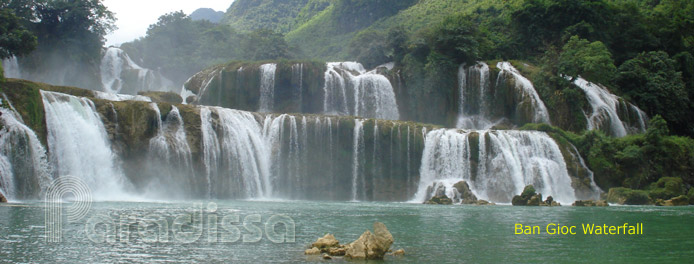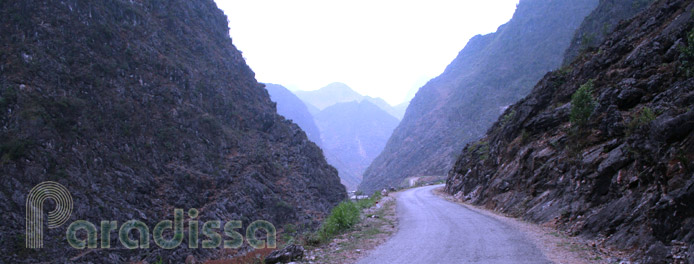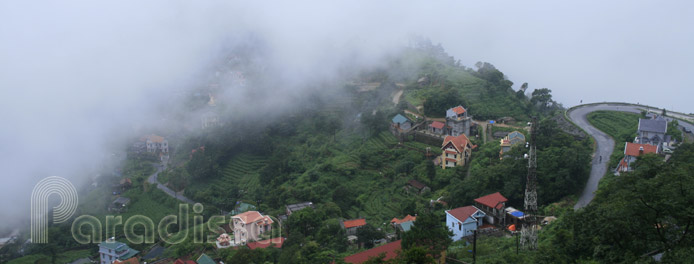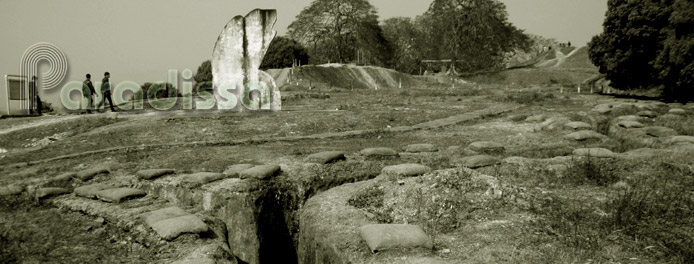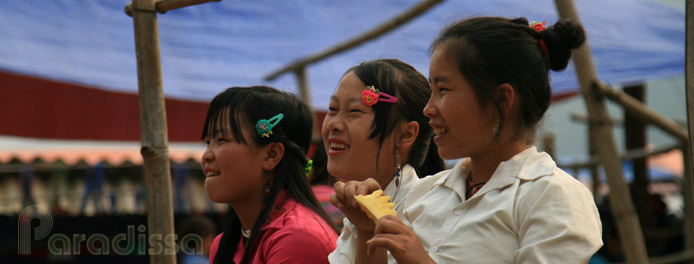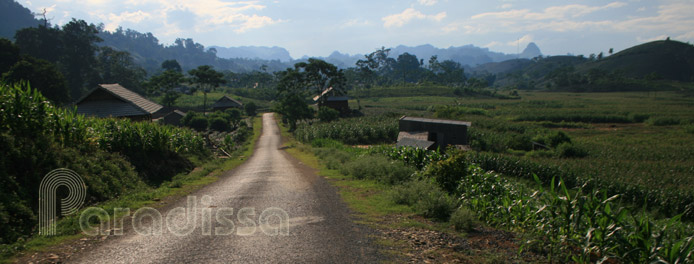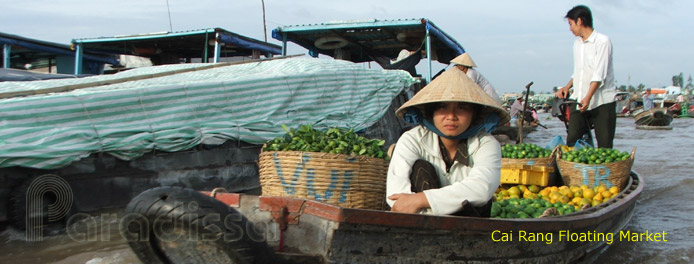Tinh Hoa Binh Holiday Weather today
Date/time of update: April 21, 2025, 2:41 am, Timezone: GMT+7
Few Clouds
Temperature: 32.53°C
Temperature feels like: 36.77°C
Minimum Temperature: 32.53°C
Maximum Temperature: 32.53°C
Atmospheric pressure: 1010hPa
Humidity:55%
Visibility: 10000m
Wind speed: 1.1m/sec
Wind Direction: 156 degrees
Cloudiness: 11%
Sunrise: 2025-04-20 10:36:07
Sunset: 2025-04-21 11:18:58
6-December-1950: De Lattre was appointed the high commissioner of Indochina and military commander of French forces in Indochina. De Lattre wanted the supreme powers in the army and in the politics to have all tools to make his plan into reality.
Vietnam Historical Tours: Hoa Binh Battle
1/ De Lattre’s Arrival in Vietnam in 1950
After his arrival in Saigon on 16-December-1950, De Lattre did help to amp up the French troops' morale which had much deteriorated after Viet Minh's Border Campaign in 1950. Militarily, De Lattre knew how to stop Viet Minh from achieving its goals: using mobile forces and air support during the battle of Vinh Yen, maximizing French artillery's capability during the battles, not to provide enforcement during the battle along Route 18, mustering mobile forces to deal with Viet Minh's unexpected attacks during the battle of Ninh Binh (or Battle of the Day River). De Lattre ordered the construction of blockhouses to stop Viet Minh's infiltration into French occupied areas…

A diagram for Hoa Binh Battle 1951-1952
Still, the military achievements were too slow to come and far below De Lattre's ambitions; he wanted to quickly vietnamize the war by building local troops through using Bao Dai and his puppet government. De Lattre increased big-scale military operations in French occupied areas in attempts to completely free them from the presence of Viet Minh and guerrillas in the summer of 1951. De Lattre did not want to take a passive stance, he wanted to take initiative and wanted to force Viet Minh to fight the battles that he initiated. De Lattre wanted to have a recognized military victory so that he could get a bigger budget for his plan from the French government and more support from the US.
It is worth mentioning that there had been noise in Paris that De Lattre was too passive waiting for attacks by the Viet Minh only...
2/ Prelude to the Hoa Binh Battle 1951
The increase in frequency and scale of the French military operations, Viet Minh's army and guerrilla forces suffered huge difficulties in 1951. Besides, Ly Thuong Kiet Campaign (Nghia Lo Battle) trying to remove the French posts at Nghia Lo in September 1951 failed. The failure did show worrisome weaknesses of a Viet Minh's regular division. In his memoirs, General Giap admitted of the French victories in the French-occupied lands in the later half of 1951 which had been unprecedented earlier.
It had already been November 1951 and Viet Minh did not have a clear plan as to the military operations in the dry season of 1951-1952. There was a temporary plan which lacked focus and which left General Giap in a puzzle as to the possible results. They had discussed the possibility that the French would take action if Viet Minh didn't start first and they had considered the possibility that the French would seize Hoa Binh. But they had thought the possibility was low due to many disadvantages the French would have to face taking control of Hoa Binh. And Hoa Binh was not much guarded by Viet Minh: the big divisions were not there.

Xuan Mai, Hoa Binh
Suddenly came the news that the French troops had seized Cho Ben and Hoa Binh Town: De Lattre had taken action first this dry season!
10-Nov-1951 Operation Tulip: 12 battalions of infantry and 5 artillery batteries took control of Cho Ben (Luong Son, Hoa Binh) cutting the infiltration route from Viet Minh's headquarters into the Red River Delta.
14-Nov-1951 Operation Lotus: 16 battalions of infantry, 8 artillery batteries, 2 engineering battalions, 2 companies of tanks with air force. In the afternoon three parachute battalions landed in Hoa Binh. Mid night, 2 mobile groups one followed Route 6 towards Hoa Binh Town; the other followed the Da River to take control of Tu Vu (Thanh Thuy, Phu Tho).
15-Nov-1951: De Lattre hosted a press conference in Hanoi announcing the victory of seizing Hoa Binh and that this would cause huge difficulties to Viet Minh and Viet Minh would have to come. De Lattre came to Hoa Binh on 19-Nov-1951 then went back to France and died there soon after due to cancer. Salan became the commander in chief of the French forces in Indochina and conducted Hoa Binh Battle after De Lattre's death.
On the Viet Minh's side, General Giap felt relieved upon hearing the news the French seized Cho Ben and Hoa Binh on 14-Nov-1951.
From 15-Nov to 23-Nov-1951 successive meetings were held on the Viet Minh side which decided to shift the focus of their military operations from the Red River Delta to Hoa Binh. Tasks for the divisions were as follows:
- Divisions 312th and 308th would take care of the targets along the Da River from the Trung Ha Bridge to Hoa Binh Town (over 55km).
- Division 304th would fight the targets along Route 6 from Xuan Mai to Hoa Binh Town (40km) and along Route 21 from Xuan Mai to Cho Ben (over 30km).
3/ Battle of Hoa Binh: Along the Da River & around Mount Ba Vi
1-Dec-1951: Tu Vu (held by 1/2e RTM or Moroccan Infantry Regiment) was the first target to be removed by Viet Minh. The task was appointed to Regiment 88th of 308th.
10-Dec-1952 08 P.M: Viet Minh started attacking Tu Vu, the French posts here were overwhelmed successfully at 5 A.M on 11-Dec-1952. It was discovered later that the French artillery had fired 5,000 shells to protect the positions without success.
On the Da River, French ships were damaged, destroyed or sunken by the Regiment 36th (308th) and by Regiment 141st (312th). The last major attack on the Da River was an ambush by Regiment 36th which destroyed a French flotilla of 1 warship and 4 canoes 10km north of Hoa Binh Town on 22-Dec-1951. There would be no further supplies by the French on the Da River after this incident.
On 29 & 30-Dec-1951 Regiment 141st (312th) attacked and seized 2 of 3 important high points on the Ba Vi Mountain which allowed control of a large area around.

The Da River at Ben Ngoc, Hoa Binh
4/ Battle of Hoa Binh: Along Route 6 & around Hoa Binh Town & along Route 21 from Xuan Mai to Cho Ben
Along Route 6, Division 304th made various attacks at supply trucks, convoys and patrol operations. The route was made a dead route that the French posts along it were often cut off from supplies.
2-Dec-1951 Regiment 66th (304th) ambushed a convoy of 30 trucks 15km north of Hoa Binh. They were coming to Hoa Binh from Xuan Mai and they were to be picked up by 4 trucks loaded with troops coming from Hoa Binh. Both groups were destroyed in 20 minutes.
7-Dec-1951 Battalion 353rd of Regiment 9th ambushed at Giang Mo (8km west of Hoa Binh Town) and destroyed 10 armored vehicles including a tank.
11-Dec-1951 Battalion 375th (304th) eliminated 2 platoons and destroyed 11 vehicles at Doc Kem.
29 and 31-Dec-1951 Doi Moi and Ham Voi French outposts on Route 21 were destroyed by elements of 304th.
1-Jan-1952 Viet Minh Commanders' Meeting decided to maintain the status quo along the Da River and around Ba Vi, Che & Da Chong; the main focus of all military operations were shifted to the French positions along Route 6 and Hoa Binh Town. The tasks were as follows:
- 308th reinforced by 66th (304th) was responsible for the French positions at Pheo, Dam Huong and Hoa Binh Town.
- 304th (without 66th) was responsible for the French positions from Dong Ben, Ao Trach to Xuan Mai and those along Route 21.
- 312th was responsible for those around Che & Da Chong.
7-Jan-1952: Elements of 36th (308th) destroyed the French artillery in Hoa Binh Town capturing the commander of the French artillery unit. The attacks at Dam Huong and Pheo were without success.
9-Jan-1952: Elements of 36th destroyed a Junker Aircraft at the airfield and the whole town of Hoa Binh was under the threat of Viet Minh's artillery. Supplies by air was no more possible. French commander post went underground. The town was besieged.
27-Jan-1952: Viet Minh Commanders' Meeting assessed the factors and passed a plan to fight a French withdrawal which was inevitable. The tasks were as follows:
- 308th (without 102) enforced by 209th (312th) was responsible for the section from Hoa Binh Town to Pheo.
- 312th (without 209th) and with 102nd (308th) was responsible for the section from Pheo to Ao Trach.
- 304th was from Ao Trach to Xuan Mai.
From 11 to 31-Jan-1952 French Operation Speculum was to push Viet Minh's troops further from Route 6 preparing for the withdrawal from Hoa Binh.
From 14 to 20-Feb-1952: French troops took control of the high points along Route 6 from Pheo to Ben Ngoc establishing a defense line from Hoa Binh Town to Pheo preparing to move 5 French battalions from the other side of the Da River at Hoa Binh Town to Route 6.
22-Feb-1952 17:00 hours French troops started crossing the river. French artillery fired fiercely to possible attacks around the town to cover the operation. Regiment 36th (308th) had prepared artillery batteries at Ben Ngoc but not much result was obtained due to bad quality shells. French crossing of the Da River completed at mid day 23-Feb-1952.

A sweeping view of landscape around the Da River from Pheo
23-Feb-1952 in the afternoon 209th (312th) attacked GM1 at Pheo. French troops were protected by heavy bombardments, 1 Bearcat was shot down by Viet Minh.
24-Feb-1952 3 A.M: Regiment 9th and 57th (304) attacked French troops at Doc Kem. Later in the morning heavy bombing on Viet Minh positions allowed the last vehicle of the convoy to proceed further to Xuan Mai. The French withdrawal was a big success compared to that on Route 4 (Cao Bang) in 1950. The French artillery had fired 30,000 shells to cover the operation.
Hoa Binh Battle was the last of a series of battles and operations starting with victories of De Lattre at the battles in the buffer zone between the mountains and the Red River Delta (Trung Du). The earlier battles were initiated by Viet Minh and Hoa Binh Battle was initiated by De Lattre. After the defeat at Hoa Binh Battle, the French troops would take a passive stance for the remainder of their time in Indochina.




